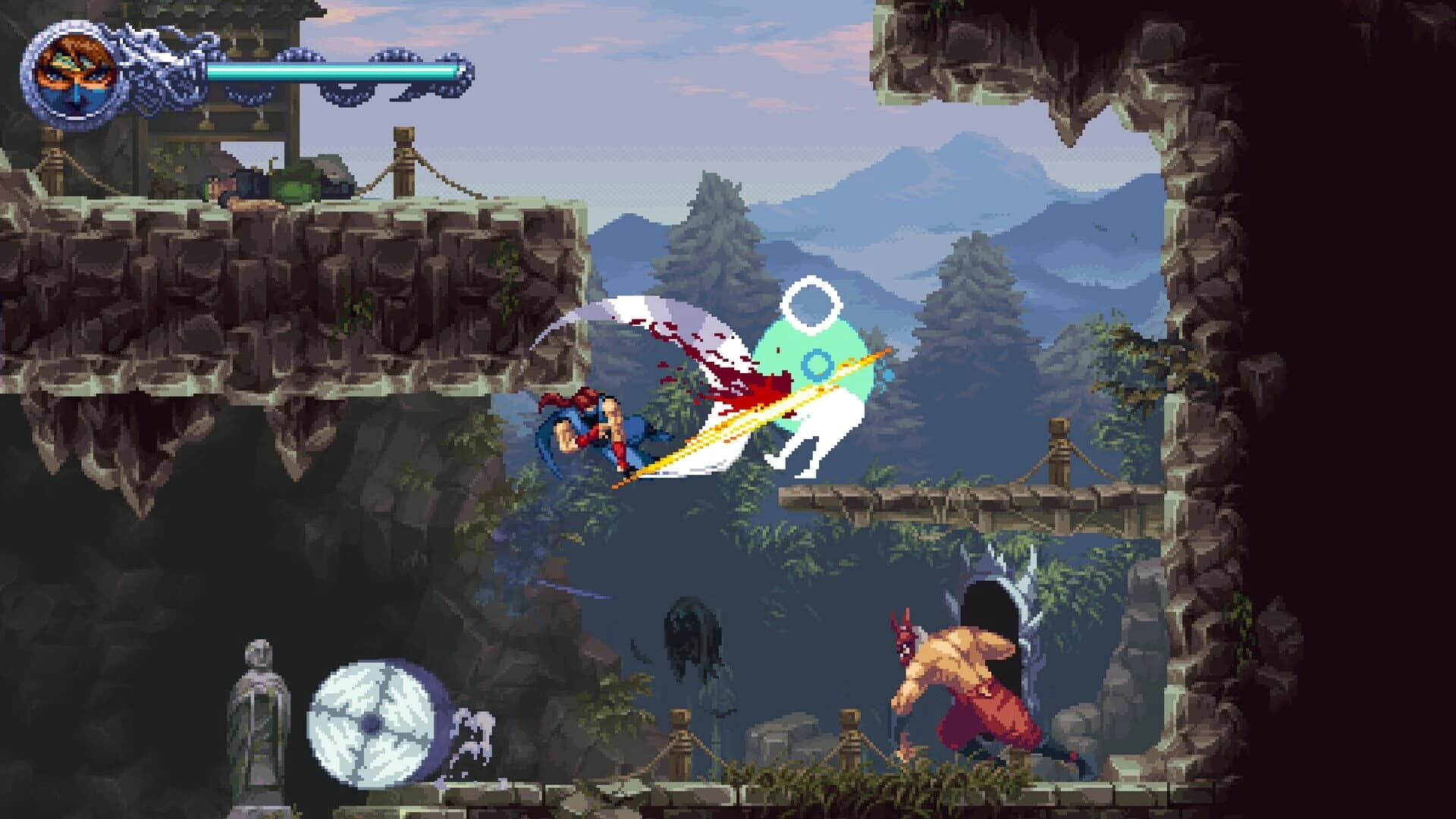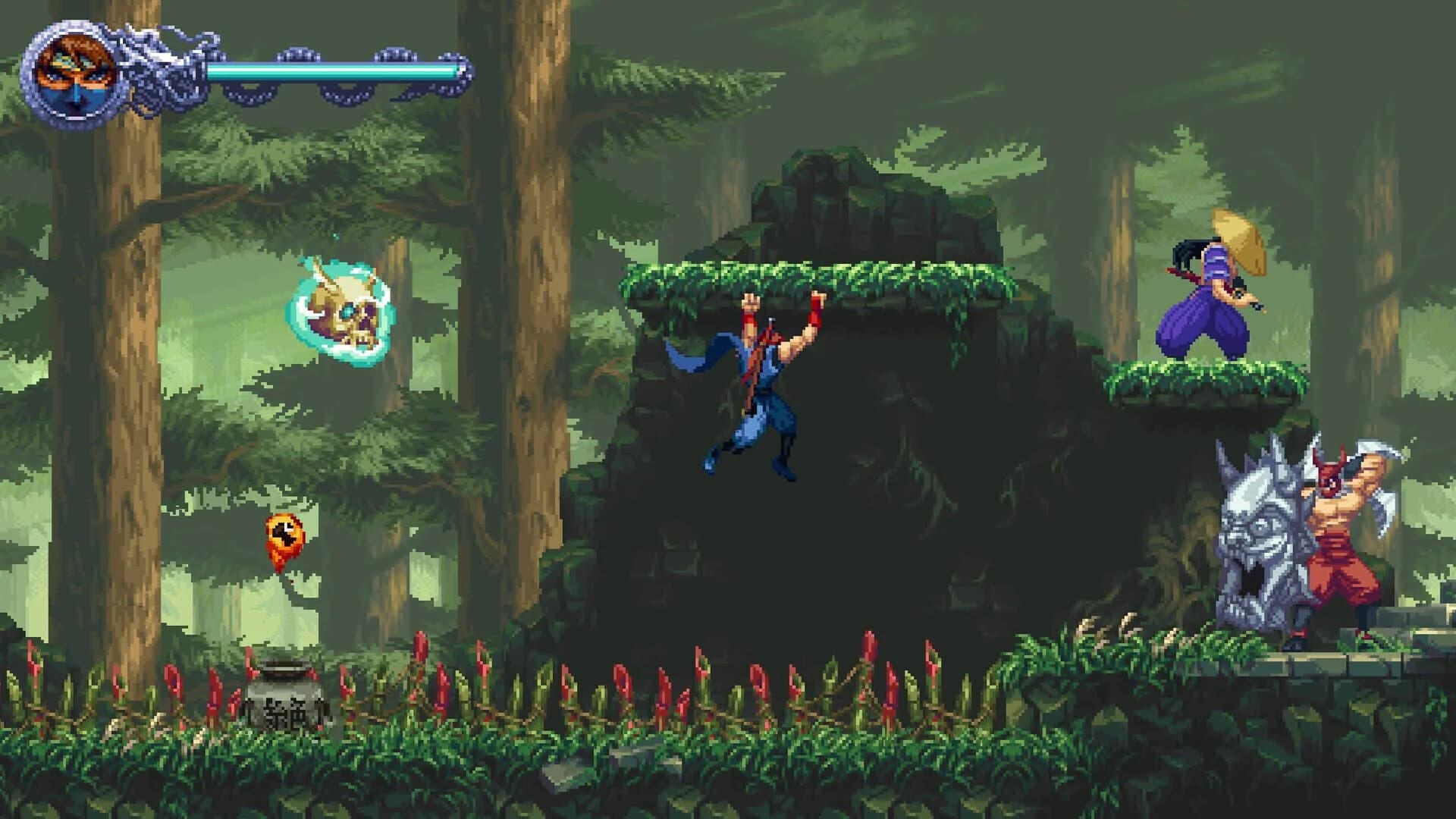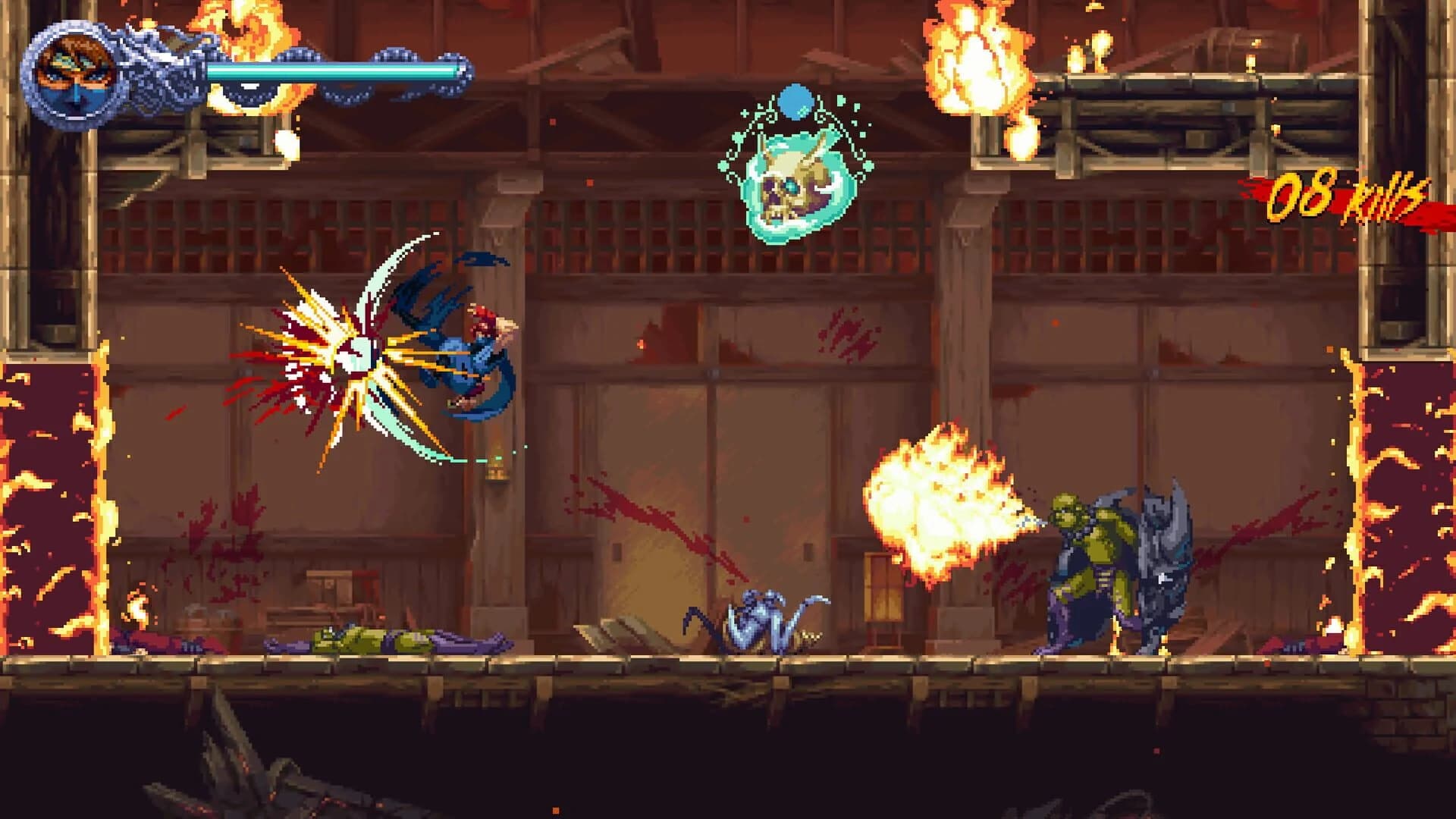
When Ninja Gaiden: Ragebound dropped in early 2025, I braced for a Ryu Hayabusa–shaped hole. Instead, The Game Kitchen and Dotemu handed me Kenji Mozu and Kumori, two fresh faces who blend seamlessly into the franchise’s legacy. From the moment you boot up on PC, Nintendo Switch, PS5, or Xbox Series X/S, Ragebound’s pixel-perfect mix of retro aesthetics and razor-sharp modern gameplay slashes through doubts: you don’t need the Dragon Sword’s legend to feel every strike land like a thunderclap.
Right from the opening title screen, Ragebound telegraphs its arcade heritage. Chunky pixel sprites pop against lush backdrops, HUD icons stay minimalist so you never lose sight of the action, and that chiptune-orchestra soundtrack rattles your speakers with adrenaline-pumping riffs. But don’t mistake the nostalgia for simplicity. Beneath the vintage veneer lies one of the most responsive action engines you’ll find: inputs register in a heartbeat, combos flow from brutal slash to explosive finisher without a hitch, and character animations snap with uncanny precision—no sluggish frames or button-mash forgiving here.
Dropping Ryu’s trademark Dragon Sword in favor of a two-for-one ninja team is Ragebound’s boldest gambit. Kenji Mozu wields a razor-sharp katana for lightning-quick combos up close, while Kumori rains kunoichi projectiles in four directions. Enemies glow blue when they’re vulnerable to Kenji’s cleaves, pink when they’re ripe for Kumori’s shuriken storms. In the heat of battle you’re constantly scanning aura colors, weaving between melee and ranged attacks in seconds. This on-the-fly swapping keeps every encounter fresh, forcing you to read enemy patterns rather than mindlessly hack away.
About an hour into the campaign, Ragebound unlocks its signature Ninja Fusion mechanic—an electrifying union of Kenji’s speed and Kumori’s reach. After filling each ninja’s special gauge, you trigger Fusion to unleash hybrid assaults that feel as strategic as they are sensational. Imagine a firestorm of pixel fragments engulfing the screen, each blow chaining into the next like a well-orchestrated performance. Against tougher foes—mechanized samurai or elemental guardians—timing your Fusion isn’t a flashy gimmick; it’s the keystone of survival, demanding you gauge enemy behavior while balancing gauge management.

Clocking in at roughly 3–6 hours, Ragebound’s campaign is concise but never rushed. Each stage alternates between gauntlet-style corridors, gravity-defying platforming, and claustrophobic arena skirmishes. Environmental hazards range from collapsing ceilings to electrified floors, forcing split-second decisions under fire. Mini-boss corridors break up the cadence, localizing bullet-hell patterns into focused trials before the next major showdown. By the time you reach the end, you’ll have seen a dozen combat twists without a single dull moment—or filler stretch—that plagues longer titles.
Standard foot soldiers and spider-ninjas give way to clever mech-warriors, spectral samurai, and hulking elemental constructs. Each enemy class demands a different response: shield-bearing brutes punish frontal assaults, teleporting assassins force quick ranged counters, and aerial drones test both ninjas simultaneously. Bosses stand out as set-piece spectacles—witness the shape-shifting oni whose limbs sprout new attack patterns mid-fight, or the cybernetic dragon that unleashes spiraling homing fireballs across the entire screen. Every pattern is a puzzle: one mistimed dash can mean instant failure, but mastering their tells rewards you with exhilarating triumphs.
Ragebound’s audio is a masterclass in thematic cohesion. Regular stages throb with retro-driven chiptune beats that synchronize with your combo rhythm, while boss battles swell into cinematic orchestral crescendos. Haunted shrine levels drip with eerie synths and distant echoes; industrial factory zones rumble with pounding percussion and metallic clangs. Even the light narrative banter—Kenji’s reserved one-liners clashing with Kumori’s sharp wit—feels elevated against this dynamic score, making each dialogue beat pop.

Whether docked on Switch, running ultrawide on PC, or powering through PS5 and Xbox Series X/S, Ragebound nails a rock-steady 60fps. Loading screens flash by in under two seconds on SSD consoles and remain impressively brief on the Switch cartridge. Control responsiveness is impeccable across controllers or keyboard—every slash and throw lands exactly when you expect. My only nitpicks: occasional UI hiccups like delayed achievement pop-ups and a split-second freeze when toggling menus on Switch. But these minor stutters fade fast in a package that otherwise feels bulletproof.
The plot won’t win literary awards, but it’s a perfectly serviceable framework: Kenji, Ryu’s protégé, teams up with Kumori from the Black Spider clan to thwart a shadowy conspiracy threatening their homeland. Along the way, subtle Easter eggs wink at series veterans—shurikens engraved with Ryu’s emblem, rumors of the Dragon Sword’s return in whispered NPC lore. Newcomers won’t feel lost, while long-time fans will grin at every nod to past installments without distracting from the fresh narrative beats.
Ragebound wears its “hard-as-nails” badge proudly. Pattern memorization and twitch reflexes are non-negotiable, and the single “Easy” mode still demands respect. There are no granular difficulty sliders or assist options—this is old-school action designed to push you to your limits. If you cut your teeth on NES-era Ninja Gaiden, Mega Man X, or modern indies like Katana Zero, you’ll feel right at home. Casual players will face frustration, but overcoming that steep curve yields one of the sweetest victories in recent memory.

In a landscape crowded with retro-infused side-scrollers, Ragebound stands tall alongside heavyweights like Celeste, Hollow Knight, and Shovel Knight. Unlike Celeste’s platform-first focus, Ragebound centers its challenge on combat depth and aura-matching strategy. Hollow Knight offers sprawling metroidvania exploration, but Ragebound keeps you on a tight trajectory—no backtracking, no sprawling maps, just pure, punch-to-the-face arcade thrills. Shovel Knight borrows RPG-lite trappings; Ragebound instead dives headfirst into bullet-hell chaos. If you crave action over exploration, this one hits harder than most.
After the credits roll, New Game+ cranks enemy density way up, remixes boss phases, and slashes timers to flirt with masochists’ fantasies. Time Attack challenges unlock global leaderboards, coaxing speedrunners to shave milliseconds off perfect runs. Hidden collectibles scattered across levels reward thorough explorers, and optional boss gauntlets test your mastery of aura-matching to its limit. While the core journey is brief, these extras amplify your time-to-value ratio, making every pixel count well beyond the first clear.
Ninja Gaiden: Ragebound distills two decades of legacy into a vibrant, pixel-art adrenaline shot. Dual-ninja mechanics spark fresh strategy, and the agile combat feels like a masterclass in twitch-driven design. Performance remains rock-solid across platforms, and the soundtrack elevates every strike. Sure, minor UI blips and a no-nonsense difficulty curve may alienate some, but fans of classic action will find their sweet spot here. If you’re craving a side-scroller that marries retro aesthetics with modern precision—no Dragon Sword required—Ragebound demands a spot on your hard drive.
Get access to exclusive strategies, hidden tips, and pro-level insights that we don't share publicly.
Ultimate Reviews Strategy Guide + Weekly Pro Tips